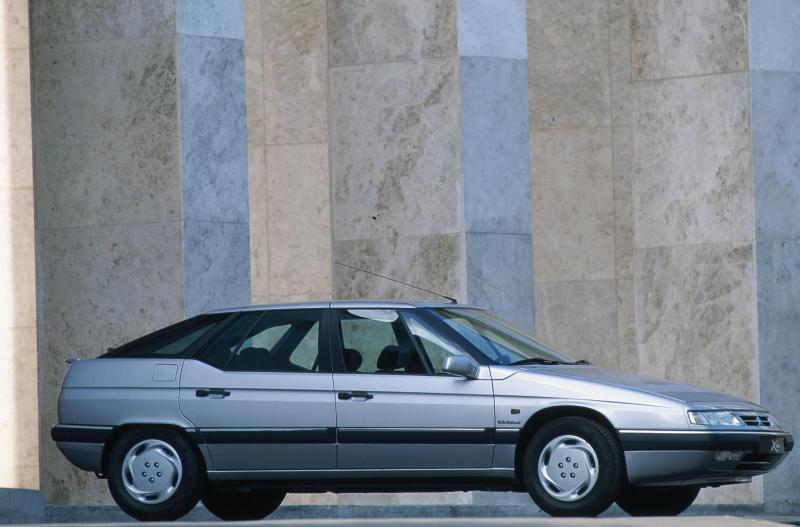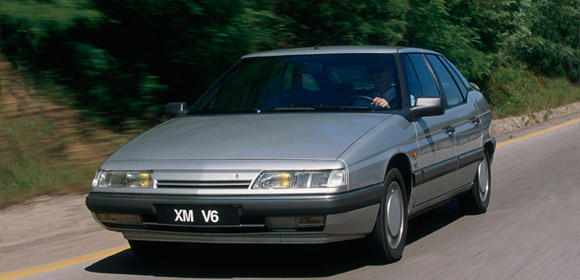It’s the XM’s 25th birthday today. It was launched in Lyon on 23rd May, 1989. Hardly seems 25 years! It was a very sophisticated vehicle and even today it’s design and engineering have stood the test of time very well.
The XM was a replacement for the CX. It won the prestigious European Car of the Year award for 1990 and went on to win a further 14 awards that year. Between 1989 and 2000. Citroën sold 333,775 XMs.
The angular Bertone design was a development of Gandini’s Citroën BX concept. The XM was a longer car with a longer, inclined nose, more refined details and with headlamps that were very much slimmer than the norm. Rear accommodation in the XM was improved over the CX in both width, legroom and height. In particular the rear passengers were seated higher than those in the front in order to afford a good view out, important for a vehicle which would operate in French government service.

Retaining the hydro-pneumatic suspension of the CX, the system was enhanced with a very sophisticated electronic control system called Hydractive, which used sensors in the steering, brakes, suspension, throttle pedal and transmission to feed information on the car’s speed, acceleration, and road conditions to on-board computers. Where appropriate – and within milliseconds – these computers switched an extra suspension sphere in or out of circuit, to allow the car a smooth supple ride in normal circumstances, or greater roll resistance for better handling in corners. Also controlled was rust; the XM had a partially galvanised body shell and has proven, over time, to develop very little corrosion.
XM was offered with a 2.0L 4 cylinder gas engine and the option of a 3.0 L V6 gas engine – the first in a Citroën since the Maserati-engined SM of 1970.
And finally, like the SM, they are beginning to be recognized as a collectible albeit modern classic.



I had two. The first one was the basic model. The second was a V6. Both were wonderful cars.
The Hydractive suspension was a bit problematic on the bad Swedish roads. It interpreted the vibrations caused by lots of potholes as fast driving, and automatically set the suspension for a harder ride. The problem was solved by filling the vibration sensor with oil. That pacified the sensor, but made it possible to get it to work again by simply blowing the oil. out. The second XM was traded in for a Xanthia Activa – which probably is the most overlooked of all the Citroen cars. The active suspension provided an unbelievable combination of comfort and flat ride. My wife got car sick because the car didn’t behave the way her brain anticipated it. A Swedish magazine ran an Activa against a VW with similar power on a race course that was about a mile and a half long. The Activa was 10 seconds faster per lap! When pit against a BMW it ran the same lap times. The Activa lost to the BMW on the straights, but gained the time back on the curvy sections. It was a truly fun and very useful car. I still miss it.